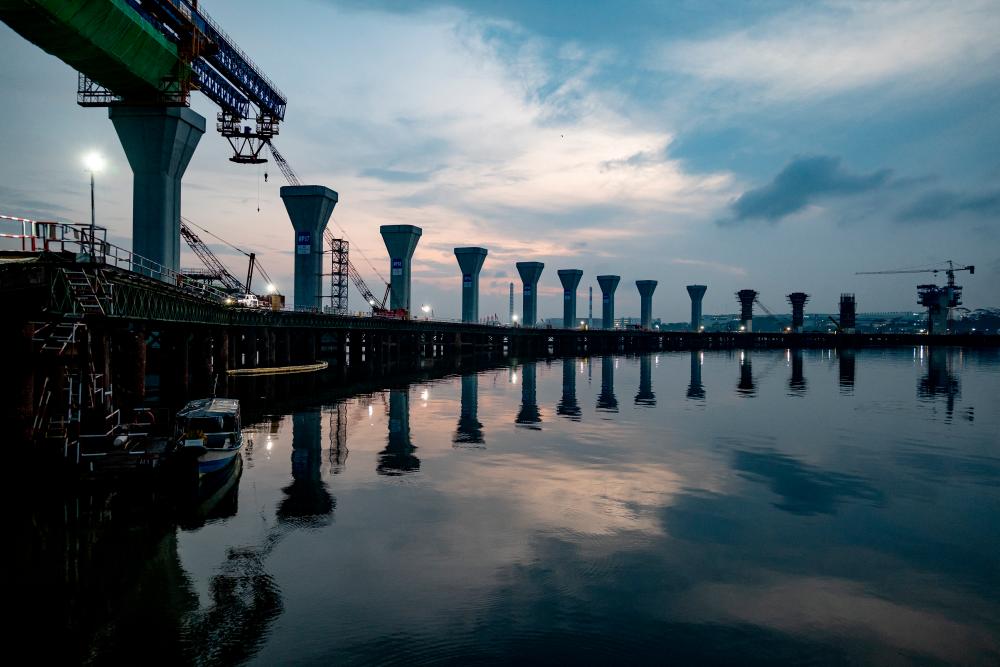BATU PAHAT: The Johor Bahru-Singapore Rapid Transit System (RTS) Link, which is scheduled for completion by December 2026, will improve public transport in the state, especially rail transport, according to a rail expert.
Universiti Tun Hussein Onn senior researcher at the Centre of Excellence for Rail Industry (ICoE-Rail), Associate Professor Dr Nor Aziati Abdul Hamid, said that apart from connecting Malaysia and Singapore, it will also benefit the development of the public transport network.
She said that the entire transport network will be improved. This includes considering whether to continue using the Bus Rapid Transit (BRT) system or to consider building a Light Rail Transit (LRT) system centred on Johor Bahru.
In her opinion, the continuation of the RTS service together with various other rail transport networks such as LRT, Monorail and High Speed Rail (HSR) must be implemented immediately to generate public interest in using public transport.
“If the RTS link is successful, it will not only boost the tourism sector and bring relief to the people of Johor, especially those working in Singapore, but will also benefit the education sector.
“We know that there are several high standard universities in Singapore, which makes it an attraction. But Johor has EduCity, where there are branches of several international universities. With RTS, it is not impossible for Singaporeans to come to Johor to study,“ she said.
Therefore, to attract outsiders to EduCity, there must be an efficient, fast and connected transport system, like the RTS, which is directly linked to the LRT or MRT, said Nor Aziati.
She added that among the proposed LRT routes to be connected to the RTS station in Bukit Chagar, Johor Bahru, are areas such as Tebrau, Skudai and Iskandar Puteri (where EduCity is located).
“For this (LRT route), it will pass through several important areas in Johor, such as the state government administrative centre, tourist areas, educational institutions and also the airport.
“Also, this continuity is necessary if we do not want passengers from Singapore to only end their journey in Johor Bahru, but also use other public transport, including intercity trains like the ETS that will run in the future,“ she said.
The RTS Link project is a four-kilometer rail network connecting Bukit Chagar Station in Johor Bahru and Woodlands North Station in Singapore is expected to attract 35 per cent of 350,000 daily travellers.
On the high-speed rail link, Nor Aziati said that the need for such rail links must be realised in the future and that the original purpose of connecting Singapore-Malaysia-China by land should be pursued.
“With the planned HSR through the ‘Singapore-Kunming Rail Link’ project, we will experience economic spillovers when several railway stations will be located in Malaysia.
“Cities with planned railway stations such as Iskandar Puteri, Batu Pahat, Muar, Melaka, Seremban and Putrajaya have the potential to become metropolises when many tourists from mainland China visit these cities,“ she said.
In terms of bilateral relations, the RTS Link project will undoubtedly strengthen the two-way relationship between Malaysia and Singapore in the long run.
Malaysia and Singapore are two unique countries that need each other for various sectors such as employment and tourism,” she said.
Yesterday, Prime Minister Datuk Seri Anwar Ibrahim and his Singaporean counterpart, Mr Lee Hsien Loong, witnessed the historic moment when the RTS Link project was symbolically ‘linked’ between Malaysia and Singapore. -Bernama









